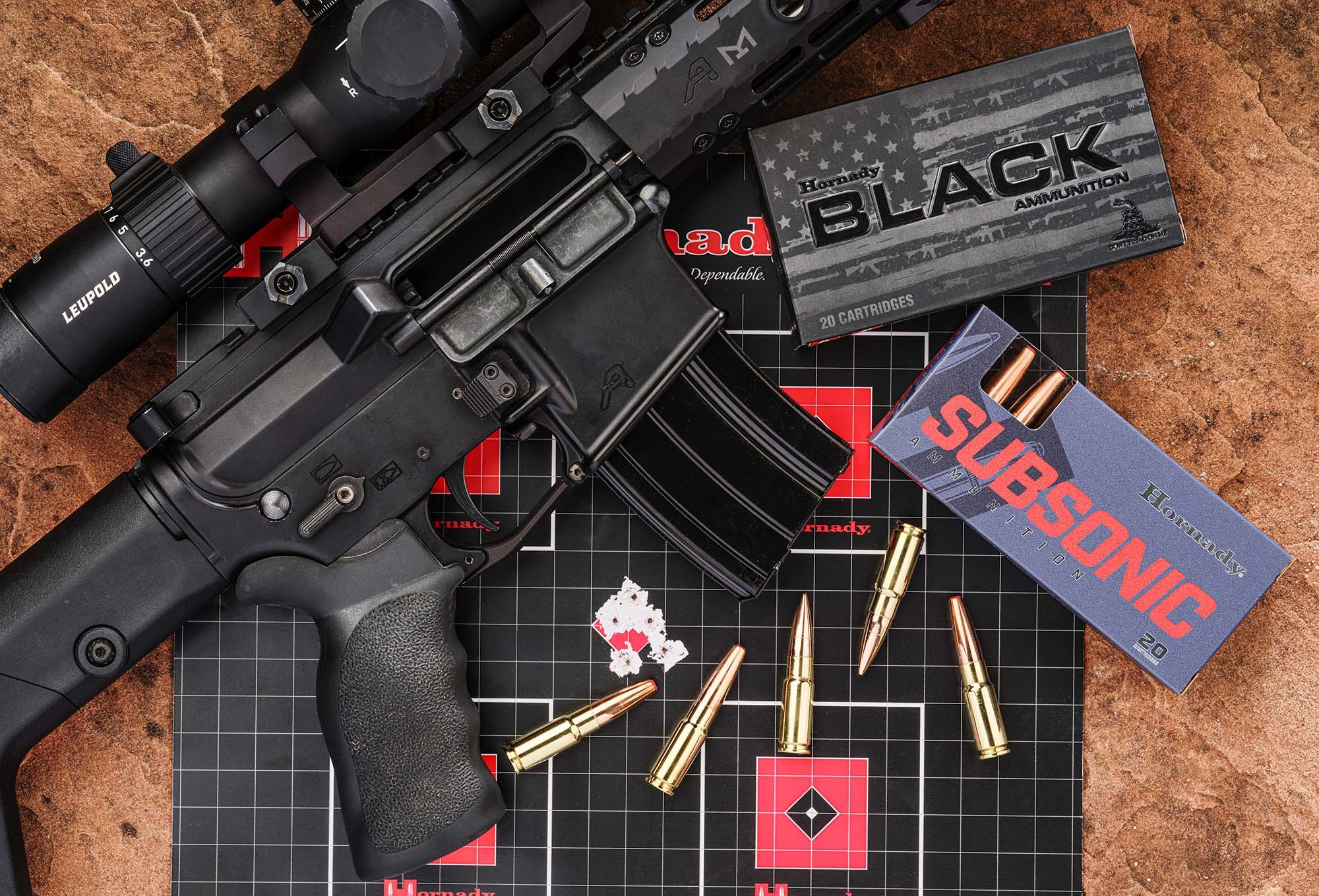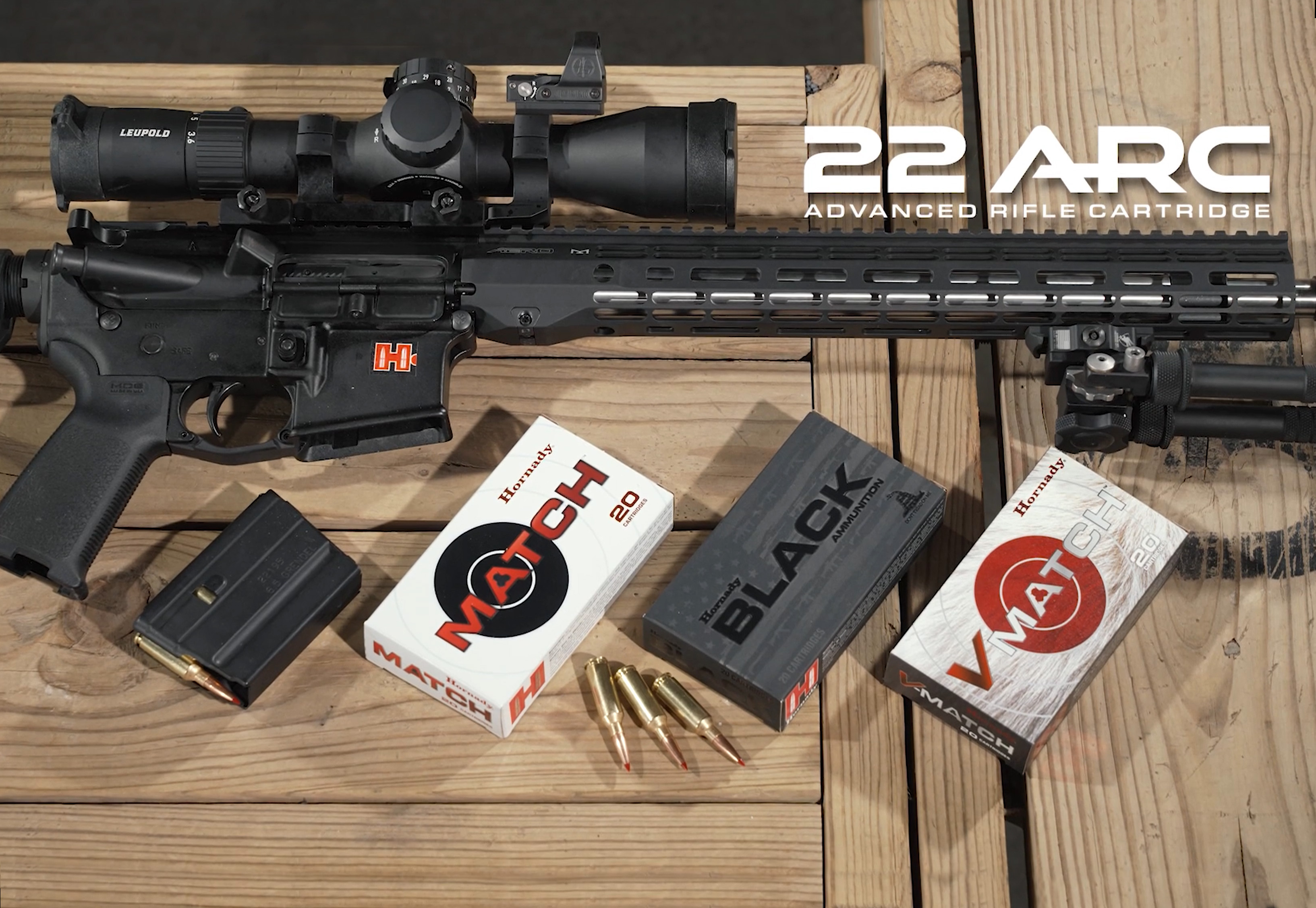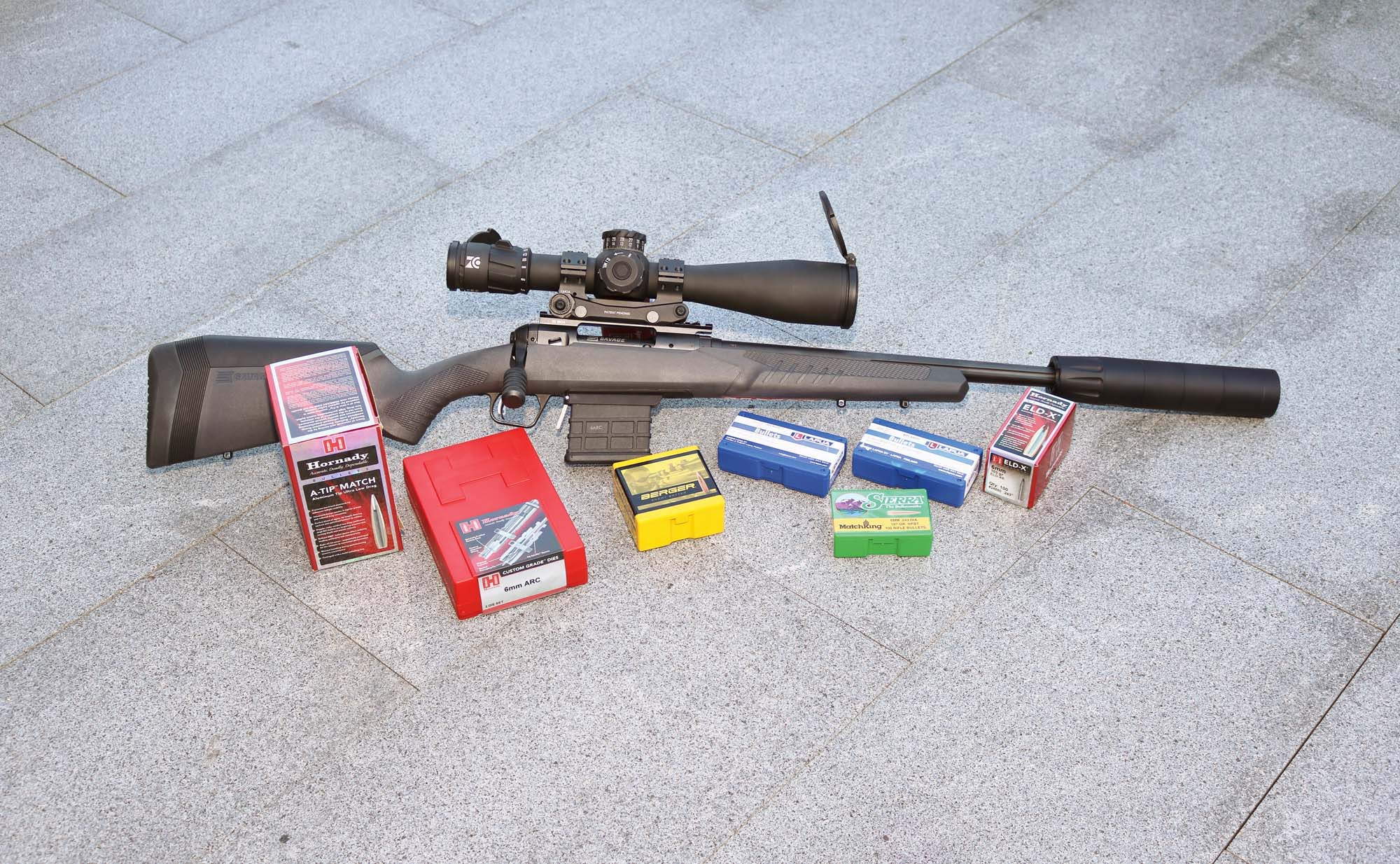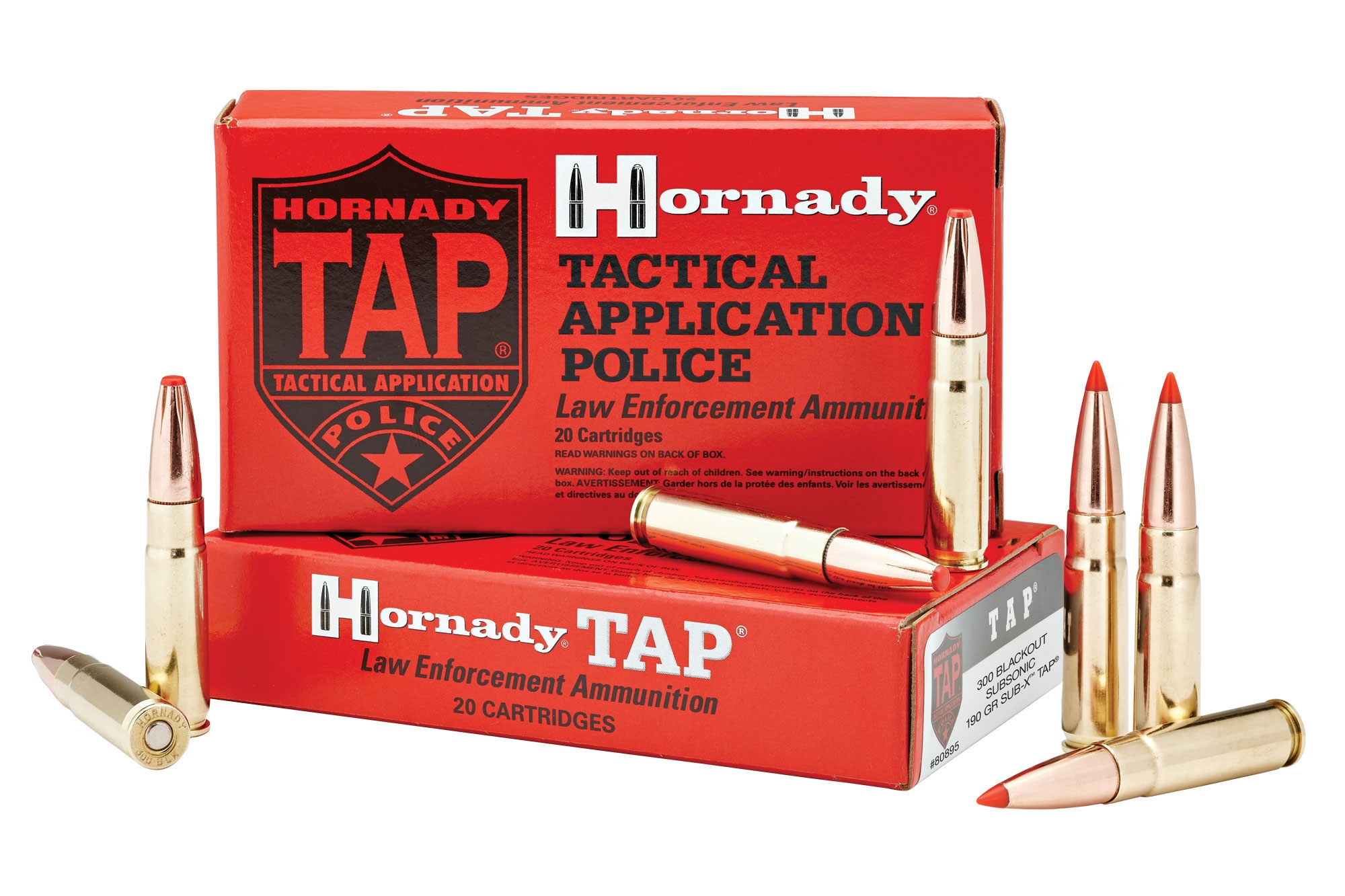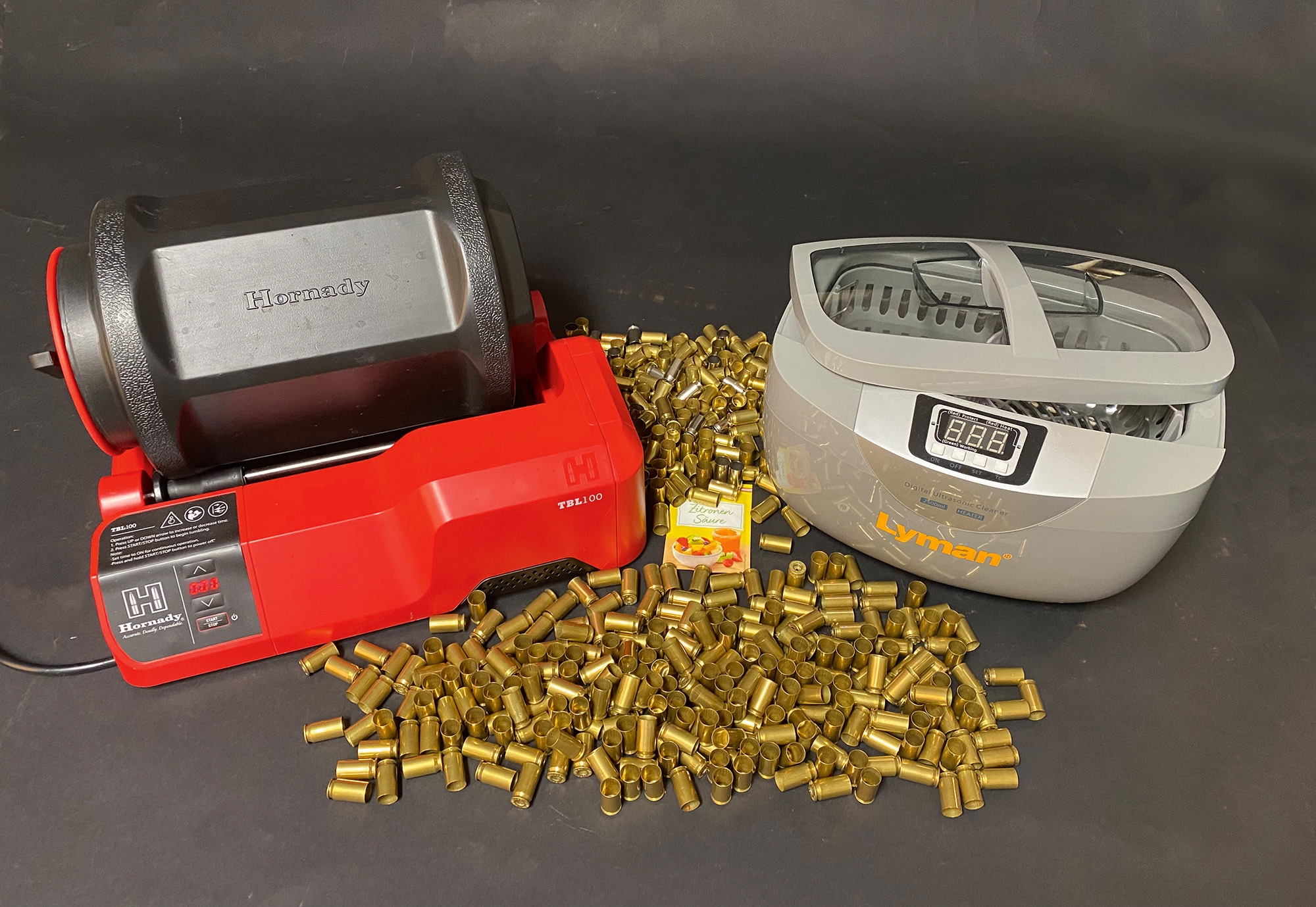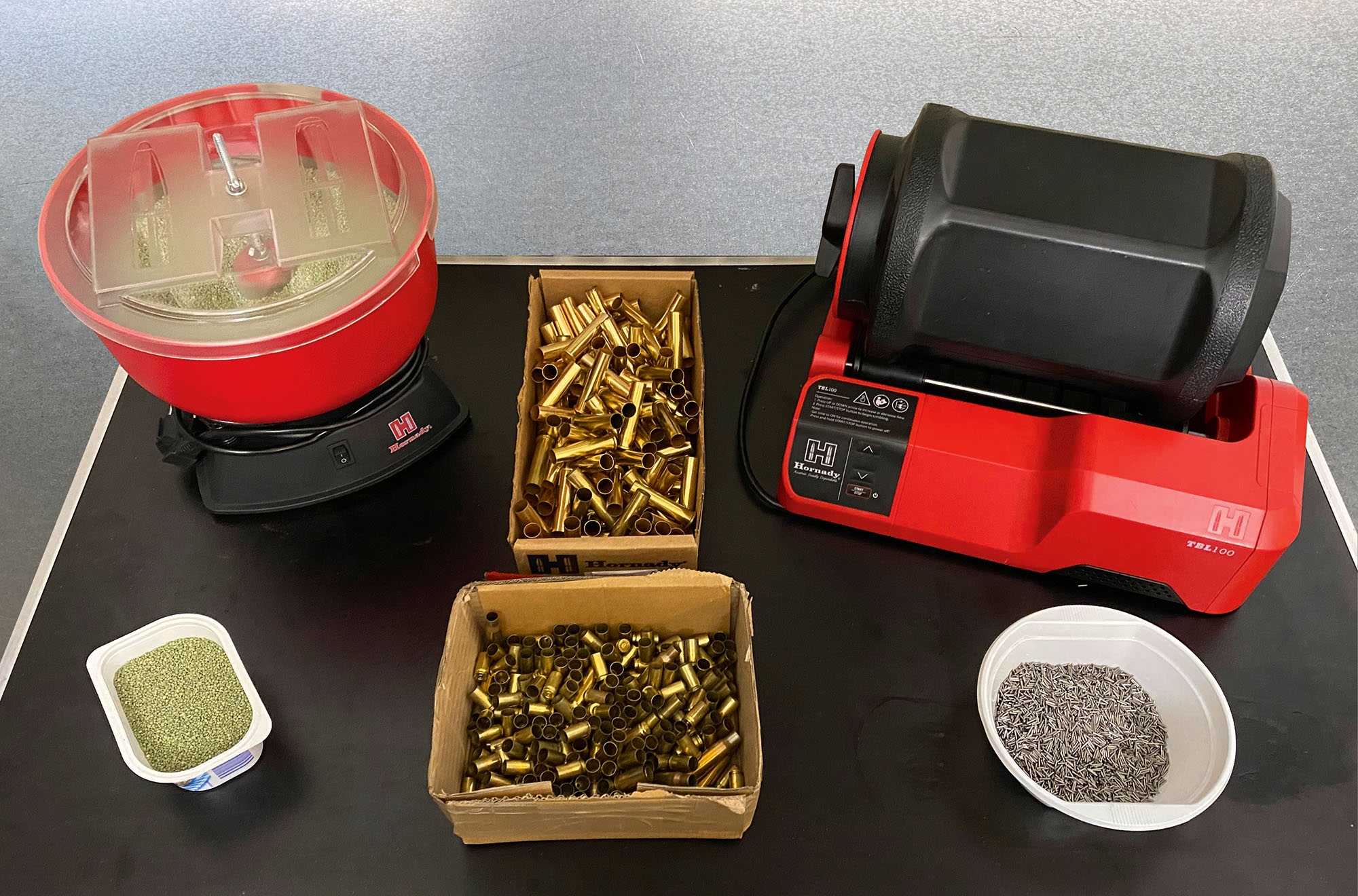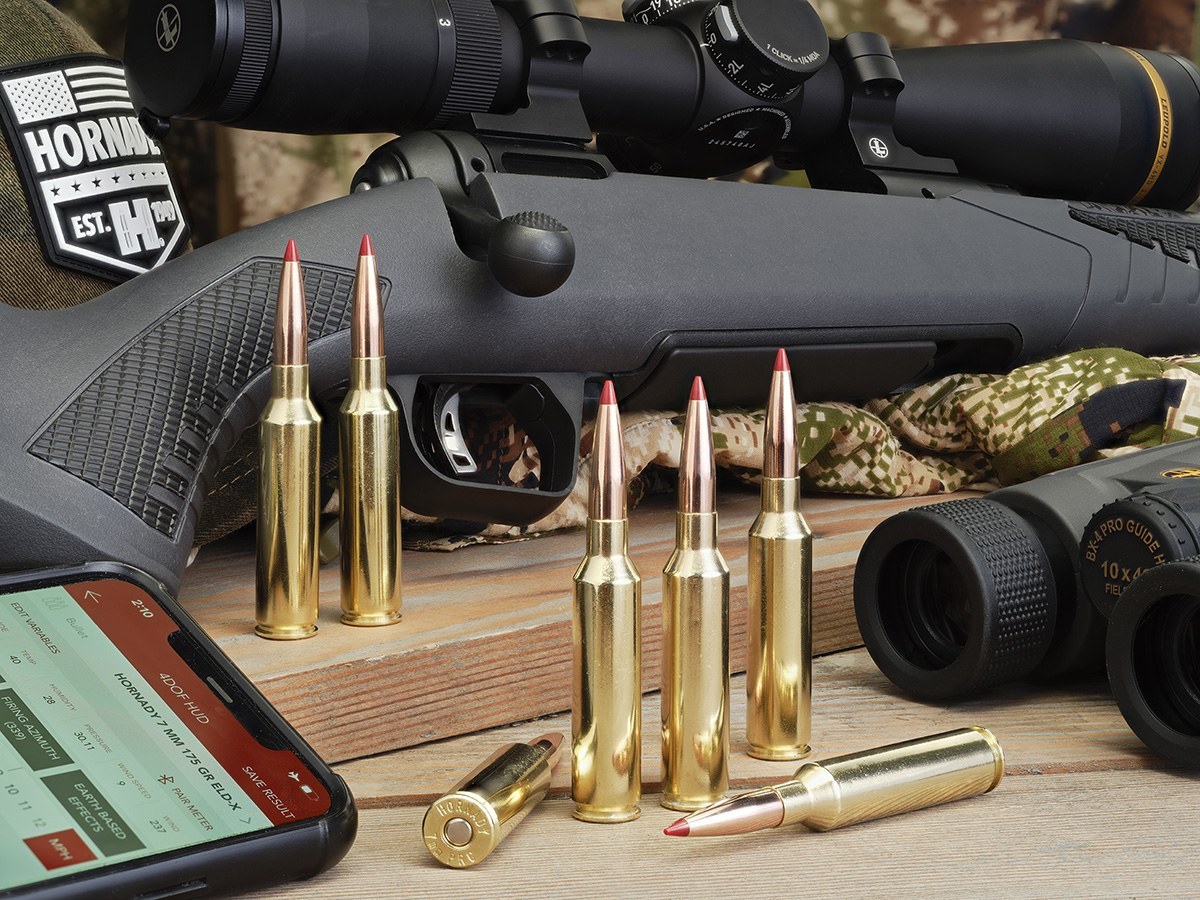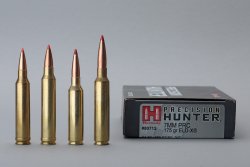
Technically, the new 7mm PRC (Precision Rifle Cartridge) follows the proven concept of the 6.5 and .300 PRC. They are all based on the case of the .375 Ruger introduced in 2007, with which Hornady developed a calibre for the US gun manufacturer that achieves the performance of the .375 Holland & Holland, but fits into a standard action. The proven case base diameter of 13.51 mm was retained, the technically superfluous belt was dispensed with and the case body was widened to the size of the belt in order to gain more case volume. Since the 7mm caliber has always met with great interest in some shooting and hunting circles due to its very good bullet weight to drag factor (streamline shape), there were attempts to enlarge the 6.5 PRC to 7mm immediately after its introduction in 2018 (case length 51.6 mm, cartridge length 75.06 mm = short action). While the case volume of the Wildcats, also known as 7mm FCP or PRCW, was sufficient for the F-Class rifles with their 30-32"/76-81 cm long barrels to bring even the heaviest bullets to optimum velocity, this was not sufficient for the barrel lengths commonly used in hunting rifles. Hornady therefore decided to reduce the cartridge length to the size of, for example, .30-06/.300 Win. Mag. and thus for long-action systems. Case length was shortened to 57.9 mm in order to have enough space for the long, streamlined bullets in the optimum position, i.e. only in the case neck and not in the powder chamber. The advantage of this is that the 7mm PRC only has around three grains more gross case capacity than the 7mm Rem.Mag. However, the net capacity – i.e. with a bullet set to maximum cartridge length – is already 4.4 grains.
Start of a new era? Introduction of highly efficient trend cartridges such as 6.5 mm Creedmoor, 6.8 Western, 7mm and .300 PRC
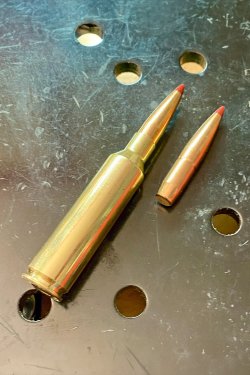
The last truly successful new cartridge introduction worldwide before the current trend, which dates back more than 15 years, was the .300 Winchester Short Magnum in 2001. It was the first commercially produced hunting cartridge with a short, wide case and a steep shoulder (35 degrees) that had a case volume almost 15% smaller than the tried-and-tested .300 Winchester Magnum while delivering the same performance. In the past, and to some extent still today, the case volume of new, more powerful cartridges was primarily increased in order to achieve more power with more propellant powder. Although this works, it has some disadvantages, such as more recoil (the powder weight must be added to the bullet weight when calculating recoil), more barrel wear, more muzzle flash and the need for longer barrels to achieve full power. The currently most successful young trend cartridges such as 6.5 mm Creedmoor (Hornady), 6.8 Western (Winchester) 6.5, 7mm and .300 PRC, on the other hand, focus primarily on efficiency. This is reflected on the one hand in the (reduced) case volume, which is matched to the powder quantity of modern propellants, and on the other hand in a steeper shoulder and a shorter case length, which allows the bullets to be placed almost exclusively in the case neck. The latter saves powder space and increases the overall power yield. While the adapted case volume prevents insufficient charge densities, the steeper shoulder of 30 degrees compared to older cartridges ensures effective yet performance-friendly powder conversion. The family-owned American bullet and ammunition manufacturer Hornady is currently a leader in this field, as far-reaching, sometimes revolutionary findings from extensive tests with the Doppler radar velocity and trajectory measuring device have been incorporated into the latest bullet and cartridge developments.
What is different about the bullets in the new cartridges?
The shorter twist of the new cartridges allows the use of ballistically optimised bullets. The smartest way to bring more power to the target is not to lose it in flight due to an unfavourable bullet shape. As our comparison has shown, the modern bullet has only half the velocity loss compared to a classic bullet. That is the average difference between a .308 Winchester and a .30-06 Springfield at just 100 metres! A positive side effect is also a lower wind drift, also only half that of a classic bullet. The higher rotational speed also improves target ballistics, as the more spin-stable bullet responds more quickly to the target. Even a 2"/5.08 cm shorter twist increases the effect on the target by approx. 10%. Mind you, all this without more powder, gas pressure and recoil.
Cartridge profile with technical specs: the 7mm PRC (Precision Rifle Cartridge) from Hornady
| Cartridge: | 7mm PRC (Precision Rifle Cartridge) |
Introduction Year: | 2022 |
Bullet Diameter: | .284" = 7.21 mm |
Case Type: | Bottleneck case, rimless and non-belted |
Shoulder Angle: | 30° |
Case Capacity (Full to the Brim with Water): | 82.0 gr |
Twist Rate: | 1:8" (203 mm) |
Case Head: | 13.51 mm (like .375 H&H family) |
Max. Case Length/Trim Length: | 57.91 mm/57.7 mm |
Cartridge Overall Length (max. according to CIP): | 84.84 mm (same as .30-06 or .300 Win.Mag.) |
Max. Pressure (according to CIP): | 4,400 bar (only 182 bar higher than the 7mm Rem.Mag.) |
Primer: | Large Rifle |
It was primarily the development of Hornady's ELD bullets with precise analysis using Doppler radar that led to today's findings. Conversely, one could also say that the new cartridges are necessary in order to be able to use the modern, high-performance bullets at all.
1. An adapted, shorter case so that the new, longer bullets fit into the standard overall cartridge length and thus into existing rifle actions. The case volume is optimised for an optimum charge density with modern propellant powders. Hornady has even worked together with the leading powder manufacturers to develop the optimum propellants.
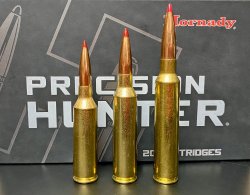
2. A more efficient case geometry with a wider and shorter powder column, a minimised case taper (almost cylindrical) and a steeper shoulder angle. This improved case design not only enables more effective powder conversion, but the steep shoulder also ensures a very precisely defined headspace. A shoulder angle of 30 degrees has proven to be the optimum compromise between ease of loading, powder conversion and barrel life. Classic carrtridges usually have a flat shoulder angle of around 20 degrees. The resulting optimised charge density also ensures lower velocity fluctuations. The brand new 7mm PRC is about 4% more effective than the 7mm Remington Magnum thanks to the case design alone. That doesn't sound like much, but 4% is the average difference in performance between the .308 Winchester and the .30-06. These findings go back to the development of the .17 HMR rimfire cartridge in 2003.
3. Lower tolerances of the chamber and barrel throat to the cartridge ensure significantly improved precision and insensitivity to the unavoidable bullet jump (the distance a bullet travels before it touches the rifling) in factory cartridges. While classic cartridges have a freebore (transition from the chamber to the rifled barrel section) that is 0.05 to 0.18 mm larger than the bullet diameter, this dimension is only 0.013 to 0.015 mm in modern cartridges – and demonstrably without any loss of practicality in terms of fouling and accuracy.
4 Thanks to this good efficiency, modern cartridges achieve the increase in performance without a significant increase in gas pressure (usually only 180 to 500 bar). In most cases, the maximum pressure is approx. 65,000 psi/4,482 bar, which both rifle actions and case material have been proven to withstand reliably over the long term.
With a barrel length of 61 to 56 cm you have practically the full performance yield, but with this efficiency and performance the 7mm PRC, like the other new cartridges mentioned, is also ideal for the short barrels down to 50 and 46 cm that are so popular in hunting.
Our test rifle for the 7mm PRC ammo from Hornady: Savage Impulse Mountain Hunter straight-pull rifle with a Leupold VX-6HD in 3-18x50 scope
The tested Savage Impulse Mountain Hunter, which is also available in other calibers, is designed as a lightweight hunting rifle and harmonises very well with the 7mm PRC. The overall weight is light enough for demanding mountain hunting, but not too light for long shooting range visits. The centerpiece is the "HexLock" straight pull action from Savage, which we tested and presented for the first time in 2021. In combination with other typical features, such as an aluminum receiver featuring an integral Picatinny rail with 20 MOA pre-tilt, adjustable trigger and stock, muzzle thread, barrel change system (interchangeable barrels are still a long way off, however) and a bolt handle that can be repositioned for left-handers, you get a pretty complete package. In the new Savage Mountain Hunter, the magazine catch has been changed from metal to polymer to save even more weight. The first-class Proof Research carbon fiber barrel also fits in with this. This saves a good 900 grams of weight without making the balance of the gun top-heavy, as is often the case with guns with carbon stocks. The barrel profile in the stainless steel barrel bore is traditionally cut in several elaborate steps, which not only ensures the best surface quality and a uniform internal diameter, but also very good hot-shot behaviour, as very little stress is introduced into the material structure. Proof Research has succeeded in using a special carbon fiber wrapping process to produce a very light barrel type that has the shooting characteristics of a heavy, steel match barrel. A Leupold VX-6HD 3-18x50 was used as the riflescope, which also fitted the rifle perfectly thanks to its very compact size and low weight. In addition to the first-class image quality, even in backlighting, the precise elevation and windage adjustment, with which the corrections from the Hornady 4DOF Ballistic Calculator could be reliably set, was particularly striking.

Savage Impulse Mountain Hunter specs and price
| Manufacturer: | Savage |
| Model: | Impulse Mountain Hunter |
| Caliber: | 7mm PRC (also available in 6.5 Creedmoor, 6.5 PRC, 270 Win., 7mm Rem.Mag., 28 Nosler (no CIP), 300 WSM and 300 Win.Mag.) |
| Action: | Straight-pull rifle with HexLock action |
| Barrel: | 22"/56 cm Proof Research stainless steel match barrel, traditionally cut with carbon fibre wrapping, 5/8x24 muzzle thread and removable muzzle brake |
| Stock: | Savage AccuStock with 3D aluminum bedding over the entire length and AccuFit stock spacers for LOP and comb height adjustment |
| Magazine: | Removable 2-round box magazine |
| Trigger: | AccuTrigger, adjustable from 680-1,814 g |
| Safety: | Two-position sliding tang safety that can be operated with both hands, automatic firing pin safety, AccuTrigger drop protection |
| Sightis/Optics Mounting: | Picatinny rail milled into the receiver with 20 MOA pre-tilt |
| Overall Length: | 114 cm approx. (depending on the selected stock length) |
| Weight: | 3.25 kg |
| Price: | 2.999 euro |
| Additional Equipment of the Test Rifle: | Riflescope: Leupold VX-6HD CDS-ZL2 3-18x50 with Firedot Duplex illuminated reticle (length/weight: 34 cm/649 g, price: 2,579 euros) |
Torture test up to one kilometer: with the 7mm PRC on the shooting range in the USA
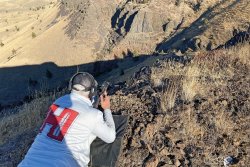
In October 2022, the authors were able to extensively test precisely this gun-cartridge combination at the breathtaking shooting range of the Leupold Academy in Madras, Oregon, under all conceivable hunting conditions up to 1,000 metres. The moderate recoil of the lightweight hunting rifle equipped with a muzzle brake compared to the cartridge performance was striking. Equally remarkable were the significantly faster and louder hits on the steel targets compared to the 6.5 Creedmoor, which was also tested there. The extreme insensitivity to wind also became clear. In October 2023, we went pronghorn antelope hunting in the USA with four hunters and the gun/optics/ammunition combo presented here. Again, the accuracy was impressive, as all four production rifles were able to reliably hit steel targets with a diameter of 25 cm at 1,000 m with the factory-loaded hunting ammunition (Hornady Precision Hunter). The cartridge also impressed in hunting use with an impressive effect on targets (4x escape distance: 0 m!).

These three 7mm PRC loads are available from Hornady – And who supplies the rifles?
The 7mm PRC is currently available in three factory loads from Hornady. With the lead-free 160 gr/10.4 g Hornady CX in the Outfitter line, the 175 gr/11.3 g Hornady ELD-X in the Precision Hunter (both 910 m/s) and the 180 gr/11.7 g Hornady ELD Match (899 m/s) as a match cartridge. As far as we know, Weatherby is the first other ammo manufacturer to offer this cartridge with two loads, 150-gr Swift Scirocco and 177-gr Hammer Custom (CIP status unknown).
Bergara, Remington, Ruger, Savage and Weatherby were among the first major gun manufacturers to include the 7mm PRC in their product portfolio. European manufacturers are sure to follow. As CIP approval was granted just under 12 months after the cartridge was introduced in the USA, the 7mm PRC is practically only just beginning to be recognised in Europe. However, its performance and balance make it an almost ideal universal cartridge here too.
Reloading the 7mm PRC: what handloaders need to consider
From a purely technical point of view, there is nothing special to consider with the 7mm PRC. The tighter tolerances from chamber to cartridge also ensure that the case does not deform as much during firing and therefore does not need to be resized as much, which benefits the service life and the reduced frequency of trimming. Cases were available from Hornady from the outset, and die sets were also available from RCBS, Redding, Lee, etc., as well as loading data from Hornady, Hodgdon and Nosler for a number of powders authorised in Europe. For the test, we opted for the Vihtavuori N560, Ramshot Magnum and the brand-new Winchester StaBALL HD propellants. The latter belongs to a new generation of propellant powders that enable high temperature stability in ball powders for the first time. In addition, there are further advantages such as above-average performance (bullet velocity), additives that reduce bullet deposits and good pouring properties in the powder measure. The times when double-base powders burned significantly hotter than single-base powders are a thing of the past.
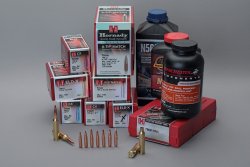
As lighter 7mm bullets, we tested the lead-free Hornady 150-gr CX and the 162-gr SST with the new Winchester powder in a starting and a medium load (according to Hodgdon load data). On the one hand, this should show whether the 7mm PRC can also be loaded for hunting or sporting use and, on the other hand, whether the slowest of the new Winchester StaBALL family also burns stably in the lower range (here approx. 3,300 bar). Both appear to be quite possible after the first tests, whereby the .308 Winchester-level starting load in particular shone with top accuracy and stable velocity. But it was only with the heavy, efficient bullets that the 7mm PRC really showed what it was capable of. The 160-gr CX and 175-gr ELD-X bullets specially developed for the cartridge could be loaded at almost the same velocity as the factory cartridges. With the heavy match bullets with 180 gr/11.7 g Hornady ELD Match and 190 gr/12.3 g Hornady A-TIP, there is certainly still room for improvement in terms of accuracy. However, the tests were aimed more at exploring maximum performance than maximum accuracy, although it should be noted that the PRC does not react sensitively to a longer bullet jump thanks to the low tolerances in the chamber and freebore. In addition to the bullets tested, there are also other highly suitable low-drag bullets such as the 168-gr Barnes LRX, the Nosler 175-gr AccuBond Long Range and the 185-gr RDF or the 195-gr Berger EOL, to name but a few.
The only factory cartridge available for the test was the Precision Hunter with the 175-gr. ELD-X bullet. This impressed with 892 m/s from the 56-cm barrel, a low V0 fluctuation and good accuracy. The velocity loss compared to the 61-cm barrel was an average of 3.7 m/s per cm. All in all, the 7mm PRC impressed in the test with a very high level of consistency. None of the 12 shot groups exceeded 33 mm, the average was 18 mm and the peak value was 7 mm – and that from a lightweight hunting rifle.
All loading data are without guarantee. Every reloader acts on his own responsibility according to the law!



